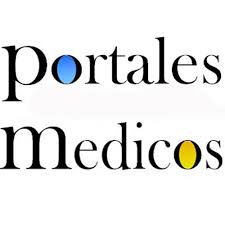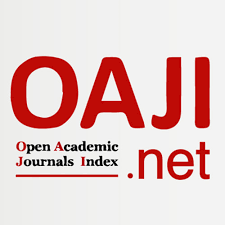Principios activos utilizados para la realización de la técnica de adipoestructuración: mecanismo de acción
Resumen
La adipoestructuracion facial es una técnica encaminada a la estructuración y organización celular de los panículos adiposos faciales a partir de la estimulación mecánica vectorial, la técnica ha sido definida por Velázco G. de la siguiente manera: “La adipoestructuración facial se define como una técnica encaminada a la reorganización paniculopática de los compartimientos grasos faciales en función a su estructura, fisiología y biomecánica, sin extraerlos en ninguna circunstancia”. Este último aspecto es de vital importancia, no se busca bajo ningún concepto la destrucción celular ni de los tejidos, sino un estímulo entrópico que permita la adecuada organización y permita los mecanismos de organización fisiológicos evitando el desarrollo de componentes severos de alteración fibrosa del tejido.Con el fin de entender como los activos puedan contribuir a estos procesos de organización se expone la siguiente revisión sobre el mecanismo de acción de los diferentes ingredientes preestablecidos, habiendo realizado para ellos una exhaustiva revisión bibliográfica sobre los aspectos farmacológicos de cada uno de los mismos.
Recibido: 28/06/2020
Aprobado:6/07/2020
Palabras clave
Texto completo:
PDFReferencias
Diepvens K, Westerterp KR, Westerterp-Plantenga MS. Obesity and thermogenesis related to the consumption of caffeine, ephedrine, capsaicin, and green tea. Am J Physiol Regul Integr Comp Physiol. 2007; 292: R77–R85.
Bracco D, Ferrarra JM, Arnaud MJ, Jequier E, and Schutz Y. Effects of caffeine on energy metabolism, heart rate, and methylxanthine metabolism in lean and obese women. Am J Physiol Endocrinol Metab, 1995; 269: E671–E678.
Dulloo AG. Ephedrine, xanthines and prostaglandin-inhibitors: actions and interactions in the stimulation of thermogenesis. Int J Obes Relat Metab Disord, 1993; 17 Suppl 1: S35-S40.
Keijzers GB, De Galan BE, Tack CJ, Smits P. Caffeine can decrease insulin sensitivity in humans. Diabetes Care 2002; 25:364–9.
Thong FS, DeraveW, Kiens B, Graham TE, Urso B, Wojtaszewski JF, et al. Caffeine-induced impairment of insulin action but not insulin signaling in human skeletal muscle is reduced by exercise. Diabetes 2002; 51:583–90.
Hernandez R, Teruel T, Lorenzo M. Akt mediates insulin induction of glucose uptake and up-regulation of GLUT4 gene expression in brown adipocytes. FEBS Lett 2001; 494:225–31.
Akibaa T, Yaguchib K, Tsutsumib K, Nishiokab T, Koyamab I, Nomurab M, Yokogawab K, Moritanic S, Miyamotob K. Inhibitory mechanism of caffeine on insulin-stimulated glucose uptake in adipose cells. Biochemical Pharmacology, 2004; 68: 1929–1937.
Conde SV, Nunes da Silva T, Gonzalez C, Mota Carmo M, Monteiro EC, Guarino MP. Chronic caffeine intake decreases circulating catecholamines and prevents diet-induced insulin resistance and hypertension in rats British Journal of Nutrition 2012, 107, 86–95.
Nakabayashi H, Hashimoto T, Ashida H, Nishiumi S, Kanazawa K. Inhibitory effects of caffeine and its metabolites on intracellular lipid accumulation in murine 3T3-L1 adipocytes. BioFactors, 2008; 34, 293–302.
B.B. Fledholm, P. Hedquist and L. Vernet, Effect of theophylline and other drugs on rabbit renal cyclic nucleotide phosphodiesterase, 5’-nucleotidase and adenosine deaminase, Biochem Pharmacol 1978; 27, 2845–2850.
Cao Z, Umek RM, McKnight SL. Regulated expression of three C/EBP isoforms during adipose conversion of 3T3-L1 cells, Genes Dev 1991; 5, 1538–1552.
Hamm JK, Park BH, Farmer SR. A role for C/EBPß in regulating peroxisome proliferator-activated receptor ? activity during adipogenesis in 3T3-L1 preadipocytes, J Biol Chem 2001; 276, 18464–18471.
Yeh WC, Cao Z, Classon M, McKnight SL. Cascade regulation of terminal adipocyte differentiation by three members of the C/EBP family of leucine zipper proteins, Genes Dev 1995; 9, 168–181.
Hansen JB, Zhang H, Rasmussen TH, Petersen RK, Flindt EN, Kristiansen K. Peroxisome proliferatoractivated receptor d (PPARd)-mediated regulation of preadipocyte proliferation and gene expression is dependent on cAMP signaling, J Biol Chem 2001; 276, 3175–3182.
Tein I, Bukovac SW, Xie-ZW. Characterization of the human plasmalemmal carnitine transporter in cultured skin fibroblasts. Arch Biochem Biophys 1996; 329:145–155.
Rebouche CJ, Seim H. Carnitine metabolism and its regulation in microorganisms and mammals. Annu Rev Nutr 1998; 18:39–61.
Murosaki S, Ryong Lee T, Muroyama K, Shin ES, Young Cho S, Yamamoto Y, Lee SJ. A Combination of Caffeine, Arginine, Soy Isoflavones, and L-Carnitine Enhances Both Lipolysis and Fatty Acid Oxidation in 3T3-L1 and HepG2Cells in Vitro and in KKMice in Vivo. The Journal of Nutrition 2007; 2252-57.
Lee M, Lee H, Lee HS, Kim Y. L-Carnitine Stimulates Lipolysis via Induction of the Lipolytic Gene Expression and Suppression of the Adipogenic Gene Expression in 3T3-L1 Adipocytes. J Med Food 2006: 9 (4), 468–473.
Cao Y, Qu H, Li P, Wang C, Wang L, Han Z. Single Dose Administration of L-Carnitine Improves Antioxidant Activities in Healthy Subjects. Tohoku J Exp Med. 2011, 224, 209-213.
Hasengschwandtner F. Injection Lipolysis for Effective Reduction of Localized Fat in Place of Minor Surgical Lipoplasty. Aesthetic Surg J 2006; 26:125-130.
Arner P, Arner O, Östman J. The Effect of Local Anaesthetic Agents on Lipolysis by Human Adipose Tissue. Life Sciences 1973; 13, 181-189.
DCosta M, Angel A. Uncoupling of lipolysis from cyclic AMP by procaine: a tool for studying the mechanism of action of antilipolytic agents. Canad J Physiol Pharmacol, 1975, S3:603-609.
Mernsmann H. Effect of Anesthetic or Analgesic Drugs on Lipogenic and Lipolytic Adipose Tissue Activities. The Society for Experimental Biology and Medicine, 1983, 172,375-378.
Caruso MK, Roberts AT, Bissoon L, Stan Self K, Guillot TS, Greenway FL. An evaluation of mesotherapy solutions for inducing lipolysis and treating cellulite. J Plastic, Reconstructive & Aesthetic Surgery, 2008; 61,
e1324.
Millward DJ. Macronutrients intakes as determinants of dietary protein and amino acid adequacy. J Nutr 2004; 134:1588S-96S.
McDonald A, Forsyth A. Nutritional deficiencies and the skin. Clin Exp Dermatol 2005; 30:388-90.
Mandal A. Do malnutrition and nutritional supplementation have an effect on the wound healing process? J Wound Care 2006; 15: 254-7.
Vuillermoz B et al, Influence of aging on the production of glycosaminoglycans and small leucine-rich proteoglycans by skin fibroblasts. Molecular and Cellular Biochemistry, 2005. 277, 63 - 72.
Oliveira Ferreira A, Santos Freire E, Polonini HC, Lopes Cândido da Silva PJ, Fernandes Brandão MA, Barbosa Raposo NR. Anti-Aging Effects of Monomethylsilanetriol and Maltodextrin-Stabilized Orthosilicic Acid on Nails, Skin and Hair. Cosmetics 2018, 5, 41; doi:10.3390/cosmetics5030041.
Traverso N, Menini S, Pesce Maineri E, Patriarca S, Odetti P, Cottalasso D, Mariani UM, Pronzato A. Malondialdehyde, an aldehyde derived from lipoperoxidation, can cause secondary oxidative damage to proteins. The Journals of Gerontology: Series A 2004, 59 (9): B890 – B895.
Peterszegi G, Molinari J, Ravelojaona V, Robert L. Effect of advanced glycation end products on cell proliferation and cell death. Pathol Biol (Paris). 2006; 54 (7): 396-404.
Wondrak GT, Roberts MJ, Jacobson MK, Jacobson EL. Inhibition of photosensitized growth of cultured human skin cells: mechanism and suppression of oxidative stress of solar irradiation of glycated proteins. J Invest Dermatol. 2002; 119 (2): 489-98.
Karasawa M., Nishimura N., Nishimura H., Tohyama C., Hashiba H., Kuroki T. Localization of metallothionein in hair follicles of normal skin and basal cell layer of hyperplastic epidermis: possible association with proliferation cellular. J. Investig. Dermatol 1991; 97: 97–100.
Koster MI, Kim S., Mills AA, DeMayo FJ, Roop DR P63 is the molecular switch for initiating an epithelial stratification program. Genes Dev. 2004; 18: 126–131. McKeon F. P63 and epithelial stem cells: more than the status quo? Genes Dev. 2004; 18: 465-469.
Bin BH, Bhin J., Takaishi M., Toyoshima KE, Kawamata S., Ito K., Hara T., Watanabe T., Irie T., Takagishi T., et al. ZIP10 Zinc Transporter Requirement for Epidermal Development: Implication of the ZIP10-p63 Axis in Epithelial Homeostasis. Proc. Natl. Acad. Sci. UNITED STATES. 2017; 114: 12243–12248.
Bin BH, Bhin J., Seo J., Kim SY, Lee E., Park K., Choi DH, Takagishi T., Hara T., Hwang D., et al. Slc39a7 / ZIP7 zinc transporter requirement for dermal development to adjust endoplasmic reticulum function by regulating protein disulfide isomerase. J. Investig. Dermatol 2017; 137: 1682-1691.
Fukada T., Civic N., Furuichi T., Shimoda S., Mishima K., Higashiyama H., Idaira Y., Asada Y., Kitamura H., Yamasaki S., et al. The slc39a13 / ZIP13 zinc transporter is necessary for the development of connective tissue; its involvement in the BMP / TGF-beta signaling pathways. Plus one. 2008; 3: e3642.
Gebhardt R. Antioxidative and protective properties of extracts from leaves of the artichoke (Cynara scolymus L.) against hydroperoxide-induced oxidative stress in cultured rat hepatocytes. Toxicol Appl Pharmacol 1997; 144:279–286.
Konyal?oglu S., Saglam H., K?vçak B. Content of a- tocopherol, flavonoid and phenol and antioxidant activity of Ficus carica leaves. Pharmaceutical biology. 2005; 43 (8): 683–686.
Brown JE and Rice-Evans CA. Luteolin-rich artichoke extract protects low density lipoprotein from oxidation in vitro. Free Radic Res 1998; 29:247–255.
Zapolska-Downar D, Zapolski-Downar A, Naruszewicz M, Siennicka A, Krasnodebska B, and Koldziej B. Protective properties of artichoke (Cynara scolymus) against oxidative stress induced in cultured endothelial cells and monocytes. Life Sci 2002; 71:2897–2908.
Huige Li, Ning Xia, Isolde Brausch, Ying Yao, and Ulrich Förstermann. Flavonoids from Artichoke (Cynara scolymus L.) Up-Regulate Endothelial-Type Nitric-Oxide Synthase Gene Expression in Human Endothelial Cells. J Pharmacol & Experim Therapeutics, 2004, 310; (3): 926-932.
Maryem Ben Salem, Affes H, Athmouni K, Ksouda K, Dhouibi R, Sahnoun Z, Hammami S, Mounir Zeghal K. Chemicals Compositions, Antioxidant and Anti-Inflammatory Activity of Cynara scolymus Leaves Extracts, and Analysis of Major Bioactive Polyphenols by HPLC et al Evidence-Based Complementary and Alternative Medicine 2017.
James J, Dubery I. Identificación y cuantificación de centeloides triterpenoides en Centella asiática (L.) urbana mediante TLC densitométrica. J Planar Chromatogr. 2011; 24: 82–7.
Liu M, Dai Y, Li Y, et al. Madecassoside herb isolated from Centella asiatica facilitates the healing of burn wounds in mice. Plant Med. 2008; 74: 809-15.
Lu L, Ying K, Wei S, et al. Asiaticoside induction for cell cycle progression, proliferation, and collagen synthesis in human dermal fibroblasts. J Dermatol intern. 2004; 43: 801–7.
Shukla A, Rasik AM, Jain GK, et al. In vitro and in vivo wound healing activity of asiaticoside isolated from Centella asiatica. J Ethnopharmacol. 1999; 65: 1–11.
Lee J, Jung E, Kim Y, et al. Asiaticoside induced the synthesis of human collagen I through the TGF-beta kinase I receptor (TbetaRI kinase) - independent smad signaling. Plant Med. 2006; 72: 324–8.
Kimura Y, Sumiyoshi M, Samukawa K, et al. Facilitating action of asiaticoside at low doses in the repair of burns and its mechanism. Eur J Pharmacol. 2008; 584: 415–23.
Haftek M, Mac-Mary S, Le Bitoux MA, et al. Evaluación clínica, biométrica y estructural de los efectos a largo plazo de un tratamiento tópico con ácido ascórbico y madecassosida en la piel humana fotoenvejecida. Exp Dermatol. 2000; 17: 946-52.
Goldman MP, Bacci PA, Leibaschoff G. Nueva York, Londres: Taylor & Francis; 2006. Celulitis: fisiopatología y tratamiento.
Rossi AB, Vergnanini AL. Celulitis: una revisión. J Eur Acad Dermatol Venereol. 2000; 14: 251–62.
Michelini S, Un fiorentino U, Cardone M. Melilot, routine and bromelain in primary and secondary lymphedema. Lymphology. 2019; 52 (4): 177-186.
Luminita PM, Pârvu AE, Pârvu M., Taamas M., Buia R., Puia M. Effects of Melilotus officinalis on acute inflammation. Phytother. Res. 2002; 16: 316-319.
Gu BQ herbal rhino extract dipping tablets plus traditional chinese medicine fumigation treatment for mixed hemorrhoid complications. Zhejiang JITCWM. 2006; 16: 607–608.
Yu-Ting Liu, Pei-Han Gong, Feng-Qin Xiao, Shuai Shao, Da-Qing Zhao, Ming-Ming Yan, Xiu-Wei Yang. Chemical constituents and antioxidant, anti-inflammatory and anti-tumor activities of Melilotus officinalis (Linn.) Pall. Molecules. 2018; 23 (2): 271.
Dobrzynska I, Gegotek A, Gajko E, Skrzydlewska E, Figaszewski ZA. Effects of routine on the physicochemical properties of skin fibroblasts membrane disruption after UV radiation. Chem Biol Interact. February 25, 2018; 282: 29-35.
Seong Jin Choi, Sung-Nae Lee, Karam Kim, Da Hye Joo, Shanghun Shin, Jeongju Lee, Hyun Kyung Lee, Jihyun Kim, Seung Bin Kwon, Min Juung Kim, Kyu Joong Ahn, In-Sook An, Sungkwan An, Hwa Jun Cha. Biological effects of rutin on skin aging. International Journal of Molecular Medecine, 2016; 38: 357-363.
Gegotek A, Ambrozewicz E, Jastrzab A, Jarocka-Karpowicz I, Skrzydlewska E. Rutin and ascorbic acid cooperation in antioxidant and antiapoptotic effect on human skin keratinocytes and fibroblasts exposed to UVA and UVB radiation. Archives of Dermatological Research https://doi.org/10.1007/s00403-019-01898-w
Allaert FA. Combination of Ruscus aculeatus extract, hesperidin methyl chalcone and ascorbic acid: a comprehensive review of its pharmacological and clinical effects and the pathophysiology of chronic venous disease. Int Angiol. 2016 Apr; 35 (2): 111-6.
Jawien A, Bouskela E, Allaert FA, Nicolaïdes AN. The place of Ruscus extract, hesperidin, methyl chalcone and vitamin C in the treatment of chronic venous disease. Int Angiol. February 2017; 36 (1): 31-41.
Tejada S, Pinya S, Martorell M, Capó X, Tur JA, Pons A, Sureda A. Possible anti-inflammatory effects of citrus genus hesperidin. Curr Med Chem. 2018; 25 (37): 4929-4945.
Uhoda I, Faska N, Robert C et al. Split face study on the cutaneous tensile effect of 2-dimethylaminoethanol (Deanol) gel. Skin Research and Technology 2002; 8:164-167.
Kurzen H, Wessler I, Kirkpatrick CJ, Kawashima K, Grando SA. The non-neuronal cholinergic system of human skin. Horm Metab Res, 2007; 39 (2): 125-35.
Un ndoye, Buchli R, Greenberg B, Nguyen VT, Zia S, Rodriguez JG, Webber RJ, Lawry MA, Grando SA. Identification and mapping of subtypes of muscarinic keratinocyte acetylcholine receptors in human epidermis. J Invest Dermatol 1998; 111 (3): 410-6.
Tadini KA, PMBG Maia Campos. In vivo effects on the skin of a formulation based on dimethylaminoethanol (DMAE). Pharmacy 2009; 64 (12): 818-22.
Kirkpatrick CJ, Bittinger F, Unger RE, Kriegsmann J, Kilbinger H, Wessler I. The non-neuronal cholinergic system in the endothelium: evidence and possible pathobiological significance. Jpn J Pharmacol 2001; 85 (1): 24-8.
Buchli R, Ndoye A, Rodriguez JG, Zia S, Webber RJ, Grando SA. Human skin fibroblasts express the m2, m4 and m5 subtypes of muscarinic acetylcholine receptors. J Cell Biochem 1999; 74 (2): 264-77.
Su Liu, Zhenyu Chen, Xia Cai, Ying Sun, Cailing Zhao, Fangjun Liu, Dalie Liu. Effects of Dimethylaminoethanol and Compound Amino Acid on Rat D-Galactose Induced Skin Aging Model. Scientific WorldJ ournal. 2014; 2014: 507351.
Grossman R. The role of dimethylaminoethanol in cosmetic dermatology. I am J Clin Dermatol. 2005; 6 (1): 39-47.
Podda M, Rallis MG, Traber L, Packer HI, Maibach. Kinetic study of cutaneous and subcutaneous distribution after topical application of [7,8-14C] rac-alpha-lipoic acid in hairless mice. Biochem Pharmacol 1996; 52 (4): 627-33.
Funda Yildirim Bas, Dilek Bayram, Bahriye Arslan, Ilkay Armagan, Sükriye Yesilot, Emine Çiçek, Emre Yorgancigil. Effect of alpha lipoic acid on smoking-induced skin damage. Cutan Ocul Toxicol 2017; 36 (1): 67-73.
Arivazhagan P, Panneerselvam C. Effect of DL-alpha-lipoic acid on tissue nucleic acid contents in aged rats. Pharmacol Res 2000; 42: 223–6.
Van Remmen H, Richardsson A. Oxidative damage to mitochondria and aging. Exp Gerontol 2001; 36: 957–68.
Scholich H, Murphy ME, Sies H. Antioxidant activity of dihydrolipoate against microsomal lipid peroxidation and its dependence on a-tocopherol. Biochem Biophys Acta 1989; 1001: 256–61.
Suzuki YJ, Aggarwal BB, Packer L. a-Lipoic acid is a potent inhibitor of NF-jB activation in human T cells. Biochem Biophys Res Commun 1992; 189: 1709–15.
Beitner H. Randomized, placebo-controlled, double blind study on the clinical efficacy of a cream containing 5% a-lipoic acid related to photoageing of facial skin. British Journal of Dermatology 2003; 149: 841–849.
Tsuji-Naito K, Ishikura S, Akagawa M, Saeki H. a-Lipoic Acid Induces Collagen Biosynthesis Involving Expression of Prolyl Hydroxylase Through Activation of TGF-ß-Smad Signaling in Dermal Fibroblasts humans. Connect Tissue Res 2010; 51 (5): 378-87.
Aruoma OI, Halliwell B, Hoey BM, Butler J. The antioxidant action of N-acetylcysteine: its reaction with hydrogen peroxide, hydroxyl radical, superoxide and hypochlorous acid. Radic Biol Med Libre 1989; 6 (6): 593-7.
Milea PJ. N-acetylcysteine: multiple clinical applications. Am Fam Physician 2009; 80 (3): 265-9.
Kerksick C, Willoughby D. The antioxidant role of glutathione and N-acetylcysteine supplementation and exercise-induced oxidative stress. J Int Soc Sports Nutr 2005; 2: 38-44.
Atkuri KR, Mantovani JJ, Herzenberg LA, Herzenberg LA. N-acetylcysteine: a safe antidote for cysteine / glutathione deficiency. Curr Opin Pharmacol 2007; 7: 355-9.
Dean O, Giorlando F, Berk M. N-acetylcysteine in psychiatry: current therapeutic evidence and possible mechanisms of action. J Psychiatry Neurosci 2011; 36: 78-86.
Nascimento MM, Suliman ME, Silva M, Chinaglia T, Marchioro J, Hayashi SY, et al. Effect of oral N-acetylcysteine treatment on plasma inflammatory and oxidative stress markers in patients on peritoneal dialysis: a placebo-controlled study. Perit Dial Int 2010; 30: 336-42.
Adil M, Amin SS, Mohtashim M. N-acetylcysteine in dermatology. Indian J Dermatol Venereol Leprol 2018; 84: 652-9.
Priscila Ramos-Ibeas María Barandalla Silvia Colleoni Giovanna Lazzari. Antioxidant functions of pyruvate in human fibroblasts and embryonic stem cells. Molche Biochem 2017; 429 (1-2): 137-150.
Babich H, Liebling EJ, Burger RF, Zuckerbraun HL, Schuck AG. Choice of DMEM, formulated with or without pyruvate, plays an important role in assessing the in vitro cytotoxicity of oxidants and prooxidant nutraceuticals. In Vitro Cell Dev Biol Anim 2009; 45:226–233.G
Gladys Velazco. Adiposestructuracion Facial. Acta Biolcinica 10(20): 25-46. 2020
DOI: https://www.doi.org/10.53766/AcBio/Se encuentra actualmente indizada en: | |||
 |  |  | |
  |  |  |  |
 |  |  |  |
 |  |  | |
![]()
Todos los documentos publicados en esta revista se distribuyen bajo una
Licencia Creative Commons Atribución -No Comercial- Compartir Igual 4.0 Internacional.
Por lo que el envío, procesamiento y publicación de artículos en la revista es totalmente gratuito.




